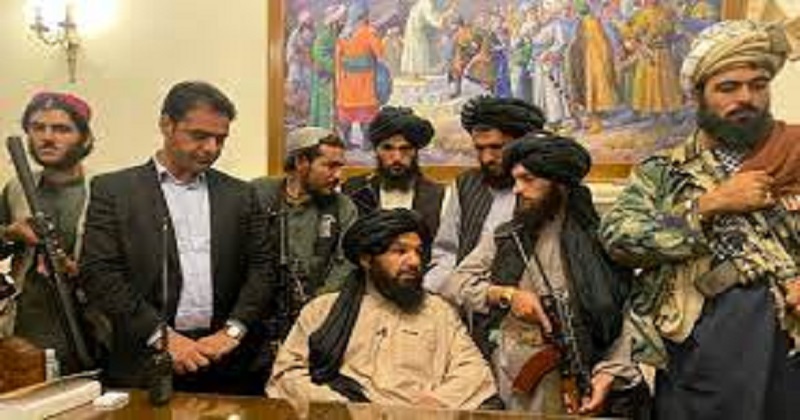
Even during the Taliban’s rule of Afghanistan from 1996 to 2001, its inner workings and leadership were shrouded in secrecy. After their short stint in power, the US troops who had arrived after 9/11, ousted them from power in Afghanistan. The group has now regained power once again, even before the US has completed its withdrawal from the country entirely. The Taliban have mainly been occupied with resisting the US in the intervening 20 years, their sole goal being to regain control of Afghanistan. Now that the militant organization has succeeded, here is a list of its top leaders:

Haibatullah Akhundzada: A cleric from the southern Afghan town of Kandahar where the Taliban was born, holds the title of Amir al-Mu’minin or ‘commander of the faithful’ in the group. The Taliban’s top decision-making body is the Rahbari, shura or Quetta.
Taliban leader, Mullah Muhammad Omar, ruled Afghanistan when the Taliban seized power in 1996. Omar fled to Pakistan after the 2001 US invasion and is said to have died there in 2013. In 2016, Mullah Akhtar Mohammad Mansour, his successor, was assassinated in a US drone strike, making Akhundzada the new Taliban leader. Even though Akhundzada has largely remained in the shadows, the key operations are managed by three aides.
Mullah Abdul Ghani Baradar: A third deputy is Ghani Baradar, the head of the Taliban’s political wing and its chief negotiator. According to reports, he is en route to Kabul from Doha following the fall of the Afghan capital, which raised speculation that he will fill the leadership vacuum left by the sudden departure of President Ashraf Ghani and the collapse of the democratically elected government.
According to Baradar, as the Taliban once again seized power in Afghanistan, the ‘type of regime’ it plans to install ‘will become clear soon’, adding that it will ensure the safety of all citizens and officials. Taliban spokesman Suhail Shaheen told Associated Press that the group holds talks – but it was unclear with whom – to form an ‘open, inclusive Islamic government’. Shaheen announced on Twitter that Taliban fighters are under strict orders not to harm anyone. The mujahideen must protect the lives, property, and honor of all Afghans, he said. These statements coincide with recent Taliban efforts to project a more moderate image as Afghans remember its repressive regime.
Zabihullah Mujahid: For a long time, not much was known about Mujahid other than the reports that he was ‘bloodthirsty for the Americans and the Afghan government officials’. He communicated with the media exclusively by phone or text message for over 20 years. Taliban leader Mujahid addressed the first press conference by the Taliban in Kabul on Tuesday, sitting in the chair of the center’s former director, who was killed earlier in the month. It was the first time his face was revealed to the public. He is expected to play a key role in bringing the group’s message to the world.
Sirajuddin Haqqani: The leader of the militant Haqqani network, is another Taliban leader. He has been designated a global terrorist and the United States has offered $5 million for information leading to his arrest. The insurgency is run by Haqqani. He is also the head of the Haqqani Network, a terror group designated by the US that operates in both Pakistan and Afghanistan and provides the fighting backbone of the Taliban. From his father, Jalaluddin, he inherited the leadership of the Haqqani network, which has strong ties to al-Qaeda. Pakistan’s North Waziristan is reportedly home to the network’s permanent base.
Abdul Hakim Haqqani: The Taliban’s negotiating team is led by him, and he is said to be a trusted aide of Akhundzada. Pakistan’s Haqqani had kept a low profile since 2001 in Quetta, where he reportedly ran a madrassa. He was appointed chief negotiator for intra-Afghan talks in September 2020. In addition, he leads a senior council of religious scholars.
Mohammad Yaqoob, Founder’s Son: Yaqoob Omar, son of Taliban founder Mullah Omar, was once the top contender to lead the group. He studied at a seminary in Pakistan and currently resides in Afghanistan, according to some reports.
Hasibullah Stanikzai: In Taliban, he is the head of the Logar provincial council and speaks impeccable English. The deputy negotiator for Abdul Hakim Haqqani during talks with Afghan government officials was him. During his visit to the United States in 1996, he tried to persuade the Bill Clinton administration to acknowledge the Taliban as a legitimate government, but his attempt failed.

Post Your Comments